Isabelline Shrike, Lanius isabellinus.
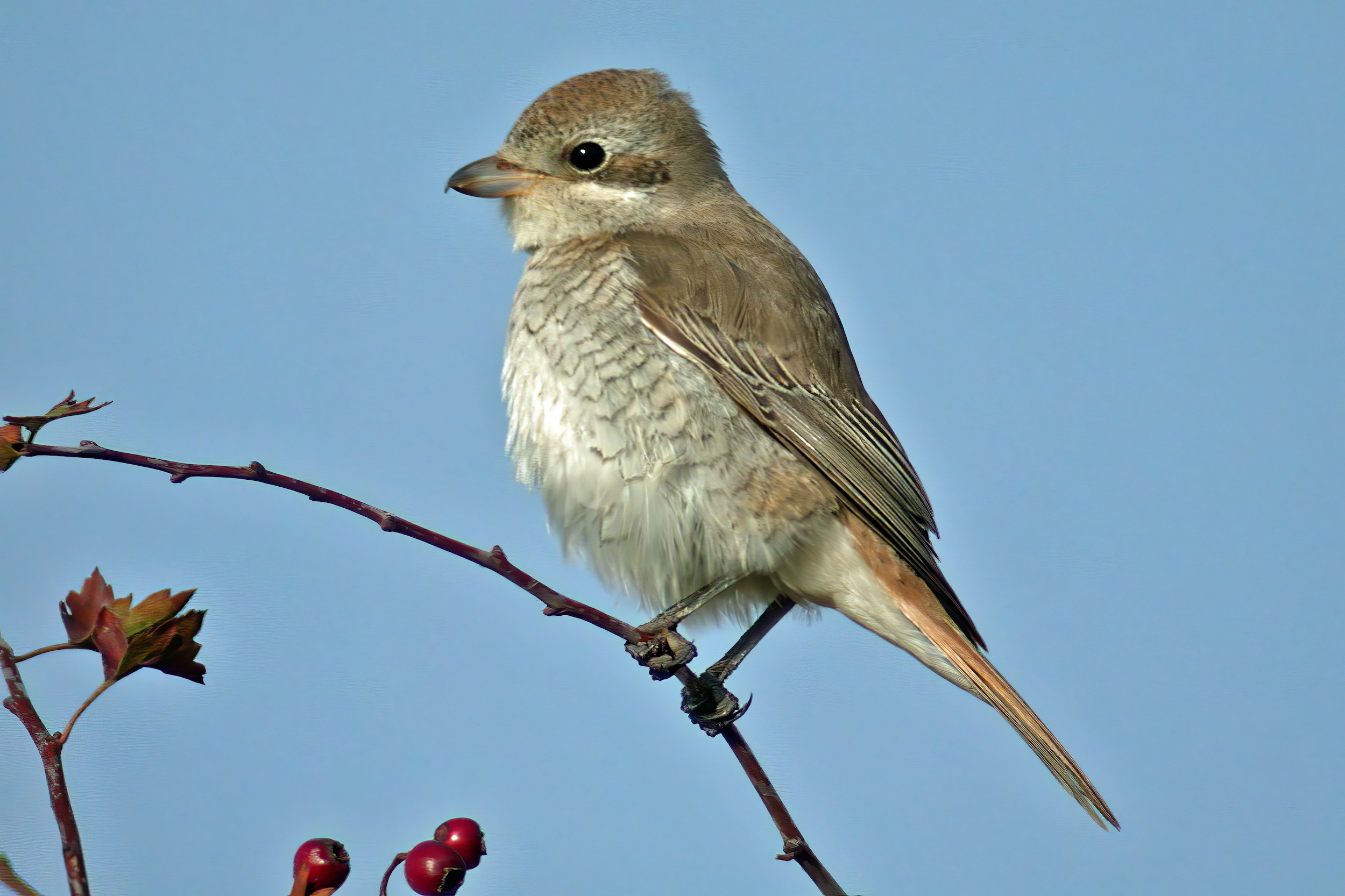
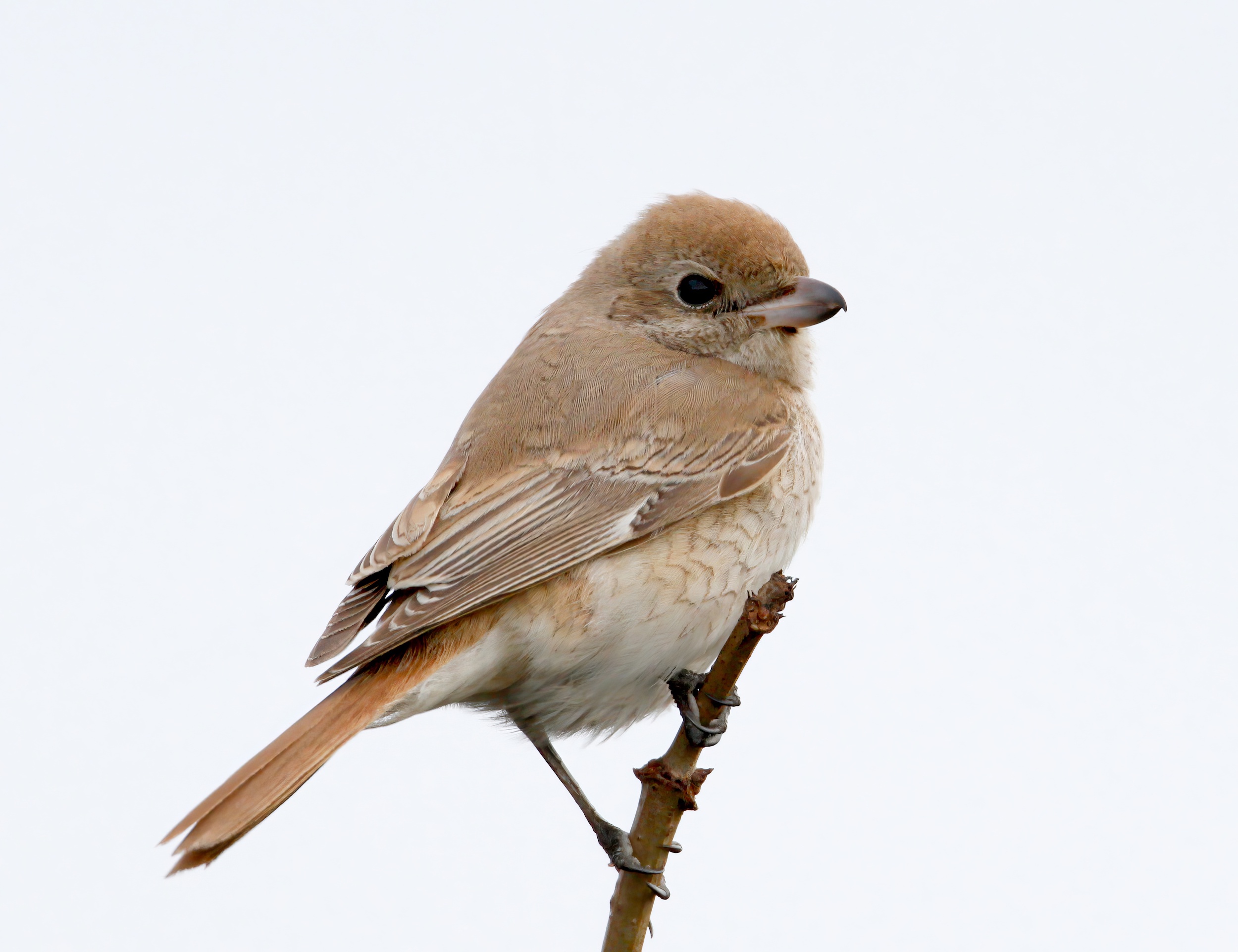
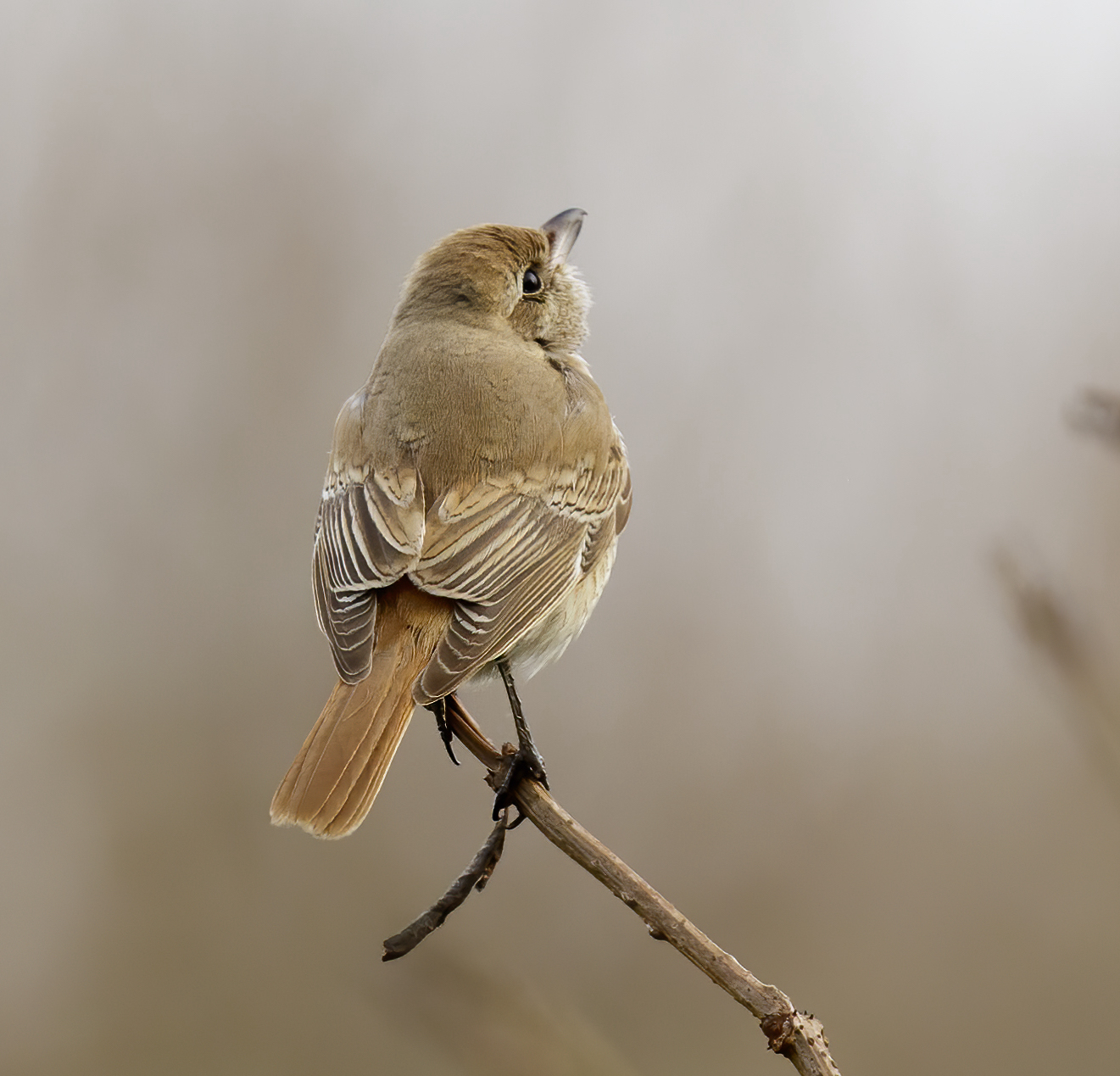
The BBRC advice in their 2018 report (British Birds 112: 556-626) is that adults of the two taxa, especially males, can be rather distinctive but 1CY birds, which form the bulk of British records, are on current knowledge not safely assigned to one species or another in a vagrant context. Note that five of the six Lincolnshire birds were 1CY individuals. The 1982 record has been especially contentious and after a review by BBRC of Isabelline/Red-tailed Shrikes (Stoddart and Hudson, 2021) this, along with 105 others, 1950-2019 were adjudged to be best left as 'Daurian/Turkestan' Shrikes.
DNA analysis may not always confirm identification and although most British examples are more likely to be isabellinus the BBRC approach is followed here with notes on whether particular individuals showed characteristics of either species. The natural desire to pin down a bird to one species or another is frustrated by this group of birds which exhibit a particularly fluid taxonomy. The six county records have been as follows:
| Site | First date | Last date | Count | Notes |
| Donna Nook | 28/10/1978 | 30/10/1978 | 1 | 1CY, trapped, race indeterminate. |
| Anderby Creek | 07/11/1982 | 08/11/1982 | 1 | Ad male. |
| Gibraltar Point | 15/11/1982 | 1 | Same as Anderby Creek bird, November 7th and 8th. | |
| Pye's Hall, Donna Nook | 14/10/1990 | 15/10/1990 | 1 | 1CY, a pale bird most reminiscent of isabellinus. |
| Stonebridge, Donna Nook | 13/10/2003 | 1 | 1CY, showing most similarity to phoenicuroides. | |
| Gibraltar Point NNR | 10/10/2010 | 1 | 1CY, a pale most reminiscent of isabellinus. | |
| Pye's Hall, Donna Nook | 20/10/2013 | 1 | 1CY, a pale bird most reminiscent of isabellinus |
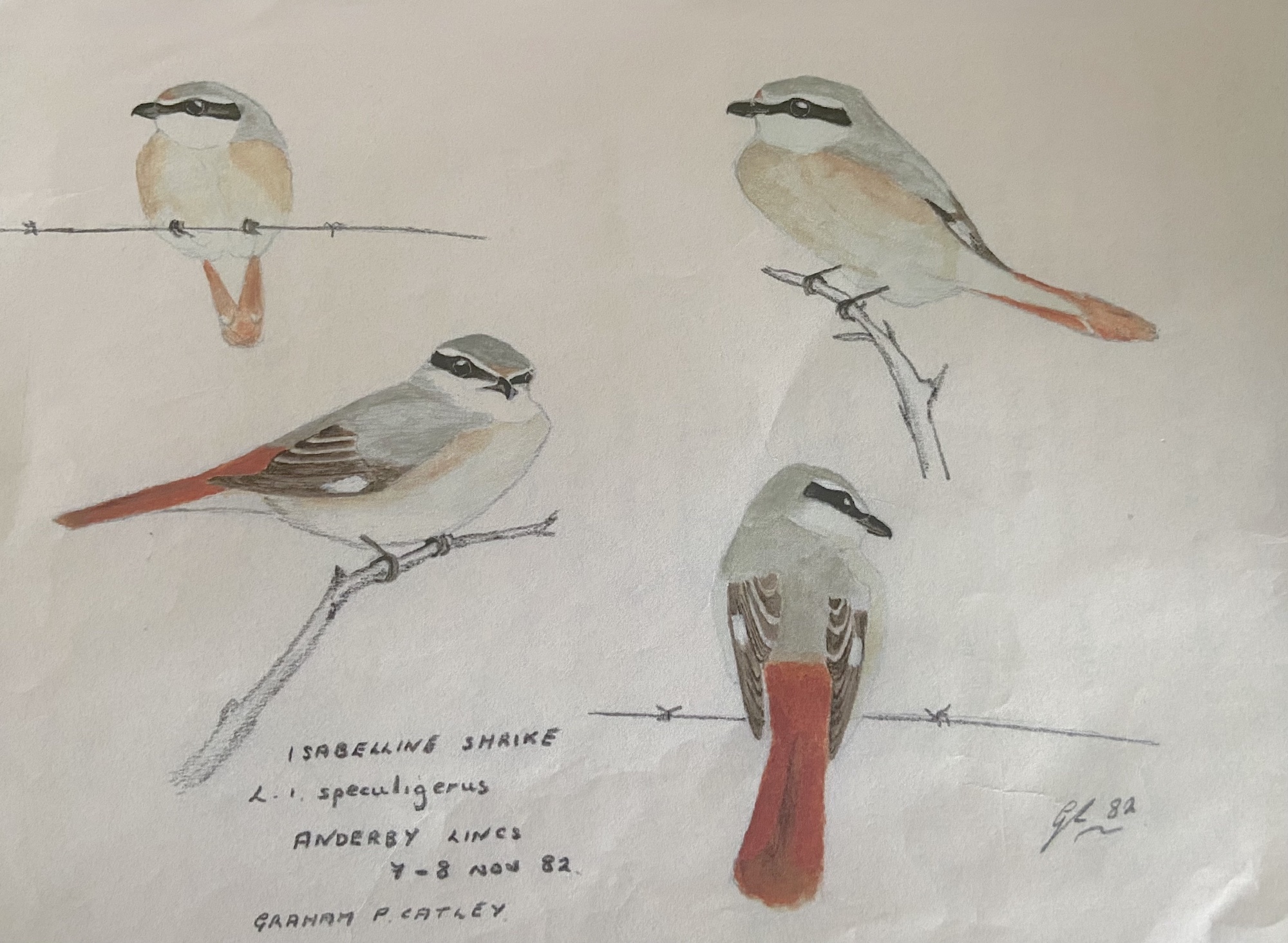
Finder’s report: Isabelline Shrike at Donna Nook, October 28th ,1978: first county record.
by S. Lorand.
Note: this account is taken from the original Rarities Committee submission
Circumstances
At 13.00 hr. on October 28th C. Morrison (CM) inspected one of his mist-nets in the copse at Donna Nook, where he found a shrike whose identity he was unsure of. He put the bird into a bag and drove round to my (SL) house which is only a few minutes away. I was just preparing to leave for the dunes, but I examined the bird in the house and was able to identify it as an Isabelline Shrike. I telephoned other observers, but all were unavailable except for Dick Lorand who came round immediately. I made the following description.
Description
Head – forehead creamy white, very finely barred dark brown. Crown warm orange-brown contrasting with warm sandy brown of nape and mantle. Broad creamy white supercilium through, over and behind the eye contrasting with line behind the eye which was fox brown with blackish streaks. Ear coverts creamy grey with slight darker mottling. Bill pale silver-pink, upper mandible tipped dark brown, lower tipped light brown.
Upperparts – mantle suffusing into pinkish-brown of rump, uppertail coverts slightly paler. Tail sandy orange, contrasting with paler back. Tips of tail feathers very worn and abraded, paler than rest of tail and trace of thin line of off-white on very outer edge of outermost feathers which were about 10 mm. shorter than the rest.
Underparts – chin and throat creamy white, breast more dirty, pale cream suffusing to white on belly and undertail coverts. Sides of breast creamy white with slight trace of medium crescentic markings. Also trace of similar markings on the flanks, but these were somewhat indistinct.
Wing - lesser coverts similar to mantle but with very slightly paler centres to feathers. Median coverts blackish-brown, broadly tipped rufous. Greater coverts not as dark as median with blackish-brown band separating creamy- white tips. Primary coverts dark brown, tipped cream with dark centre to end feathers. Primaries dark brown with conspicuous white bases on 4th to 10th, also on rest but less prominently. The width of this wing bar was c.10 mm., although the white continued beneath the coverts. Bases of 8th to 10th primaries slightly more creamy. Tips of 7th to 10th off white, all primaries noticeably edged whitish-orange. Secondaries same colour as primaries but more broadly edged orange-white with broad off-white tips. Tertials warm orange-buff, broadly edged whitish-buff. Wing linings off – white with primaries and secondaries darker.
Bare parts – legs blackish-brown, iris brown.
Biometrics – the bird was ringed by CM and measurements taken, which were wing 95 mm., bill 13 mm., tarsus 27 mm., tail 82 mm. Weight at 13.30 hr. 33 g. Third to fifth primaries emarginated.
Behaviour post-release – the bird was released in the dunes by a wire dump frequently favoured by shrikes in the past. It landed on the wire and perched there about 20 yd. away for about 30 seconds. In the field it looked even paler, both on the upperparts and underparts, while the tail seemed a brighter orange. The dark line behind the eye was discernible but hardly conspicuous, while the legs seemed more blue-grey. Eventually it flew off to reveal the conspicuous white wing bars and in flight it seemed very long-tailed. It dived into a patch of Buckthorn, and we left it for the rest of the day.
Other observers were informed that evening, and during the next two days it was watched and photographed by many people. It had set up a territory about ¼ mile south of the spot from where it was released. The area on the edge of the beach comprised Buckthorn, Marram Grass with patches of sand, and many Ragwort plants. It appeared to be quite unconcerned by the presence of observers and fed readily on the bare sand. Several times it was seen to eject pellets and one of these which was recovered revealed insect and beetle contents. It frequently perched on Ragwort for long periods and at times could be watched from ranges down to 10 ft.
P. Haywood, who saw the Isabelline Shrike on the south coast earlier in October was under the impression that it the Donna Nook bird appeared to be even paler on the mantle and back and whiter on the underparts.
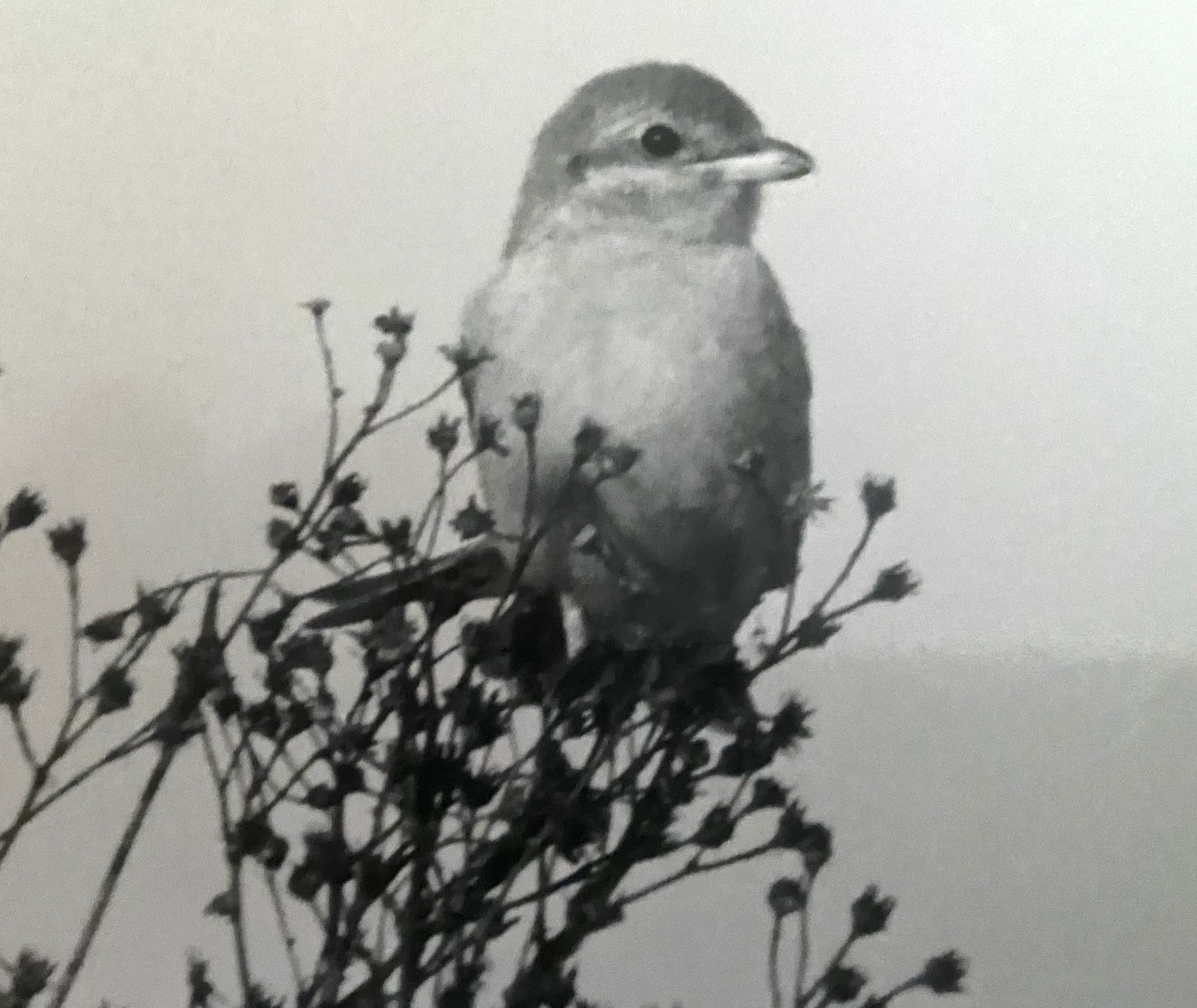
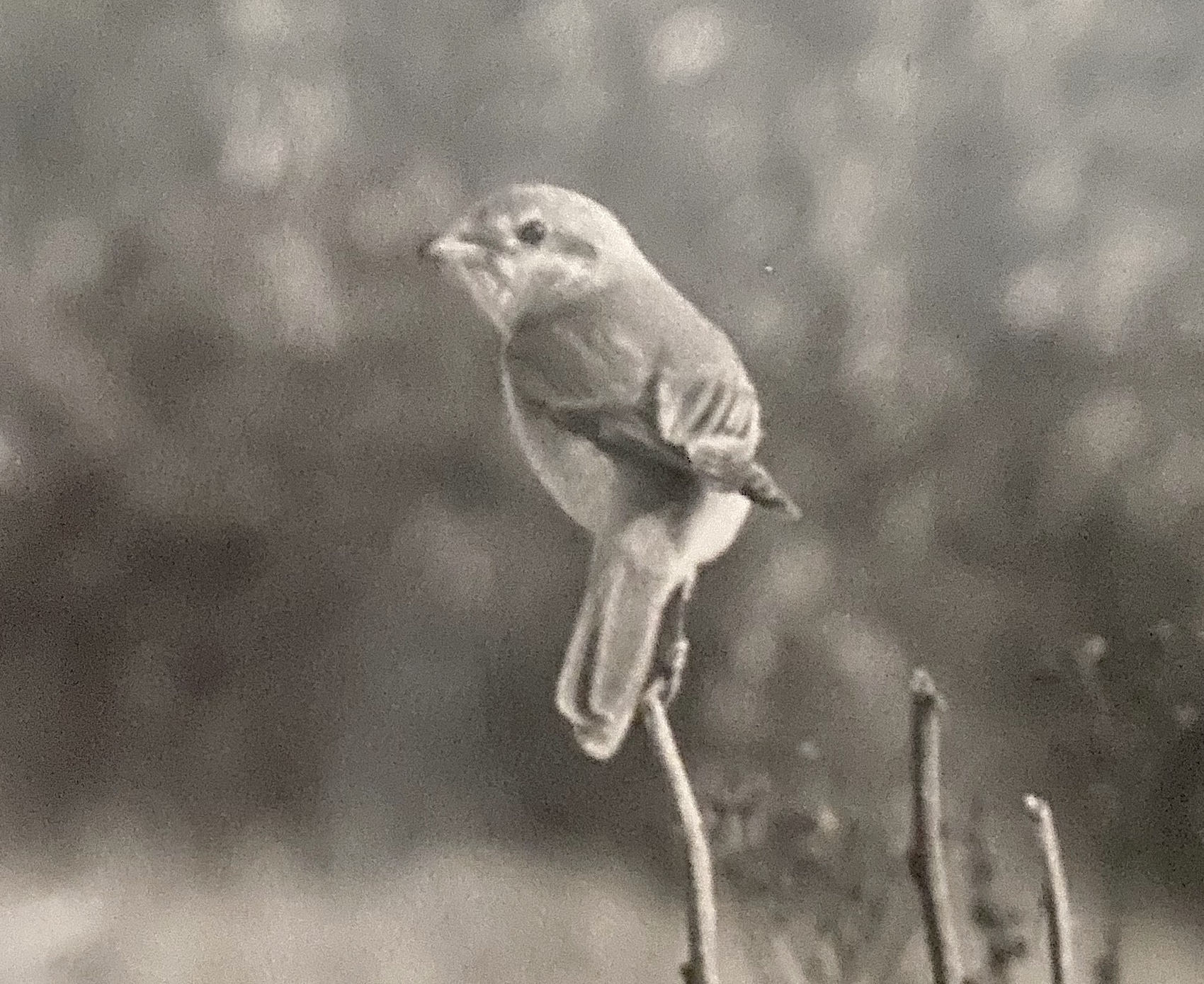
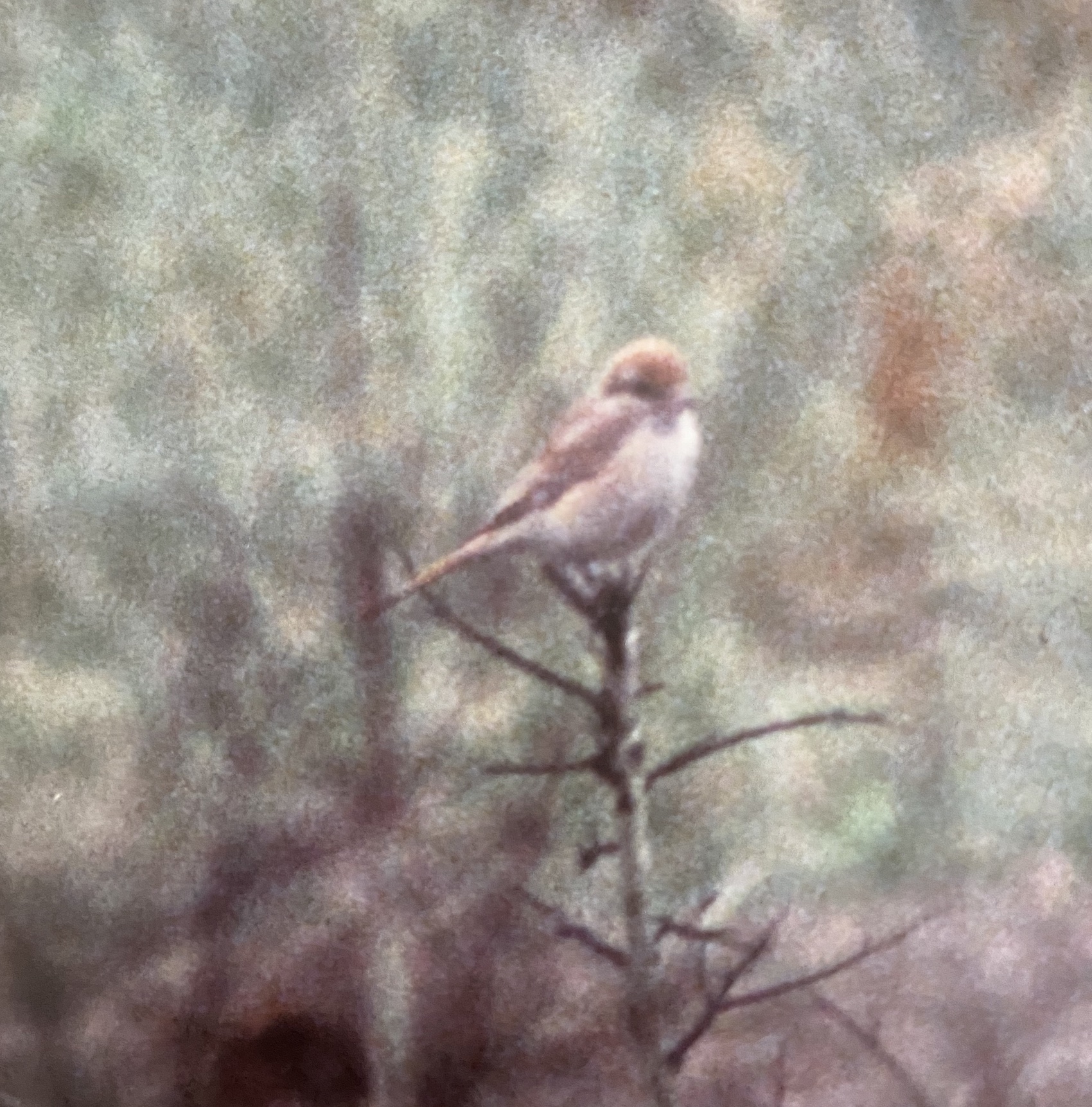
1CY Isabelline Shrike October 28th, 1978 , Donna Nook (Left/centre Keith Atkin, right Graham Catley)
Reference
Catley, G.P. (1982). Accounts of Lincolnshire rarities: Isabelline Shrike Lanius isabellinus speculigerus? Lincolnshire Bird Report 1982, 54-55.
(Account as per new Birds of Lincolnshire (2021), included October 2022)

